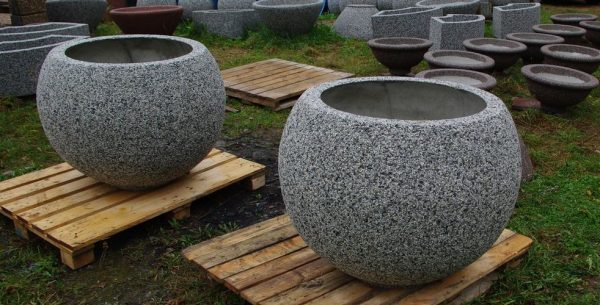Concrete mortar becomes the basis for the construction of most objects and structures. Even in a brick and wooden house it can not do without it: concrete goes to fill the foundation, screed, basement.
- Technology Description
- Application area
- The method of obtaining washed concrete
- Equipment and materials
- Production of washed concrete
- Preparation of working solution
- Laying concrete in formwork
- Unfolding process
- Flushing the external concrete layer
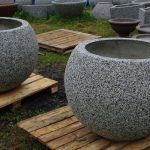
There are also special, decorative types of material that carry not only a functional, but also an aesthetic role. For example, washed concrete is an interesting technology that allows using unique materials to produce unique and very beautiful products.
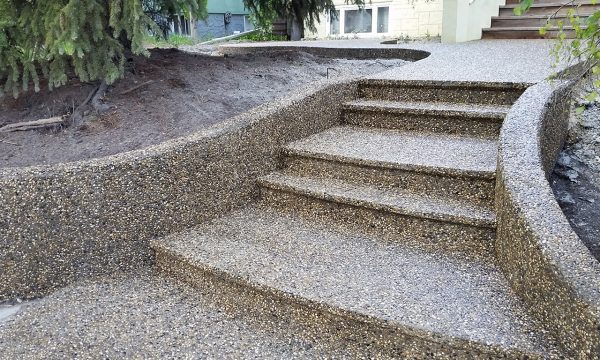
Technology Description
The production of washed concrete was established in the days of the USSR - from it they made slabs for the construction of panel houses. The appearance of such tiles was distinguished by a special texture due to the protrusion of the fractional filler on the surface. Later, wash concrete has lost some popularity, and now the technique is again beginning to be widely used by builders.
The essence of the technology is to create special conditions for the solidification of the solution, when the aging of the mixture occurs unevenly. Inside the material is gaining strength in the normal mode, but on the surface the process is slow. This effect can be achieved through the use of a special gel-like substance called a retarder. The gel enters into a chemical reaction with cement, as a result, a certain thickness of the non-curing concrete mixture is set. After that, the viscous mass is washed off with a stream of water, which exposes the grains of the filler.
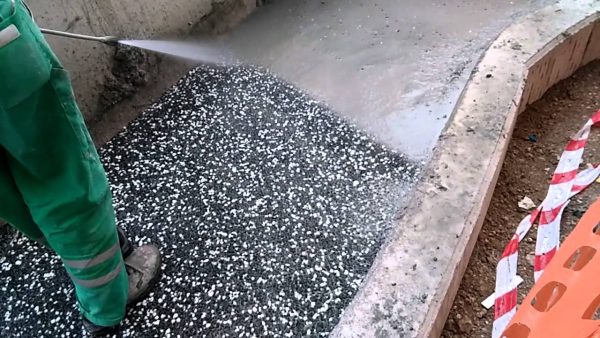
The upper decorative layer holds firmly to the base and does not separate, since the filler is evenly distributed throughout the thickness of the concrete and only partially protrudes, approximately 40%. Products are formed in the formwork, which is removed after the concrete has solidified completely. The result is a stone rough surface that has anti-slip properties. The filler may be:
- pebbles;
- marble;
- granite.
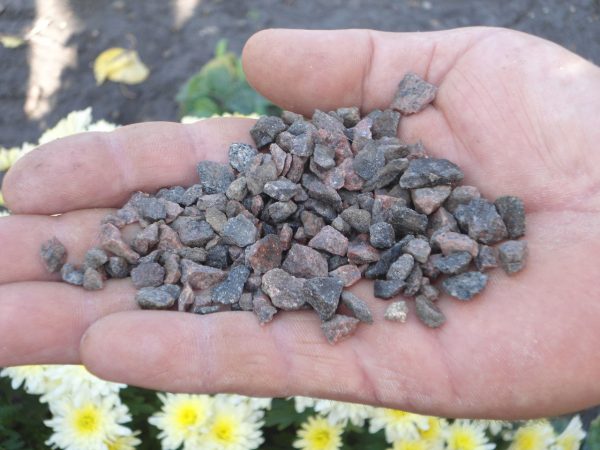
to contents ↑Washed concrete has many advantages. It is heavy-duty, not subject to wear, has a very long service life. The material is not afraid of weather disasters, easily tolerates precipitation, frost, heat, does not deteriorate even from the action of chemicals.
Application area
Most often, garden paths and sidewalks, building facade elements, retaining walls, flower girls, garden benches, and garbage cans are created from such concrete. Using the material, you can make a fence, column, stairs and railings, various decorative elements. Washed concrete finish parking areas, it is widely used in landscape and park design.
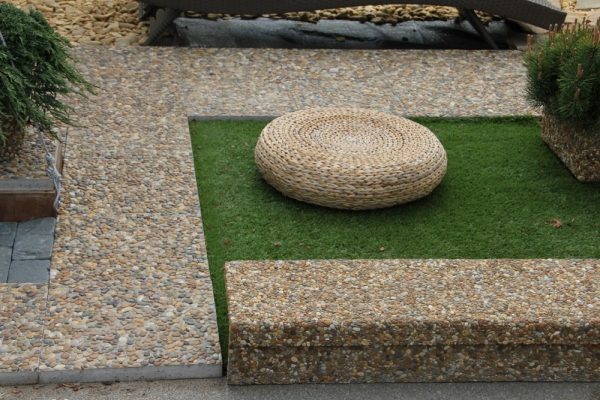
The method of obtaining washed concrete
The production of this material differs little from the production of ordinary concrete, although it has its own characteristics. The basis is a mixture of cement and sand with the addition of filler, which combines with the right amount of water. The specific appearance of the product will depend on the following indicators:
- height of filler exit to the surface;
- size of the filler fraction;
- color scheme of pebbles.
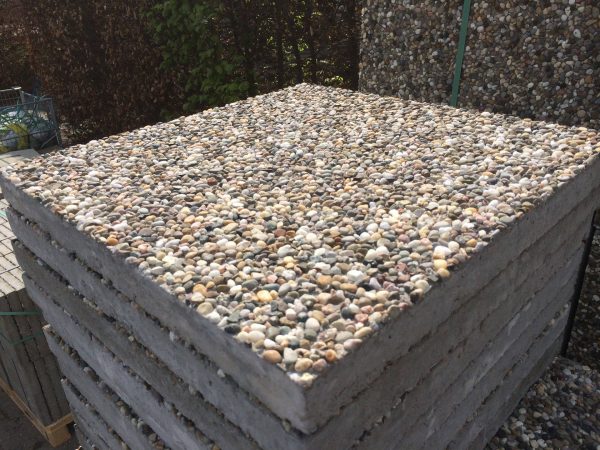
The main difference between the washed concrete technology and the traditional one is the use of a curing moderator, or deactivator. It is applied to the product from a certain side (usually from the outside). If you want to make an object with a complex pattern, the internal part of the mold is deactivated, and then the concrete solution is poured into it.
to contents ↑Equipment and materials
For work, the following consumables will be required:
- Portland cement M400. The substance based on calcium silicate is ductile, durable, and also inexpensive.
- Filler. Most often, cheap pebbles or gravel with a fraction of 5–20 mm are used. Dolomite, cast iron, granite, marble, glass balls can be more expensive and original-looking fillers.
- Sand. Selected the desired shade and fraction, of any quality.
- Water. Suitable ordinary cold, clean, without additional impurities.
- Concrete retarder. The most commonly used are Addiment B3 2, Cementol Retard, Peramin R, and RSB-500. In extreme cases, you can use molasses or whey.
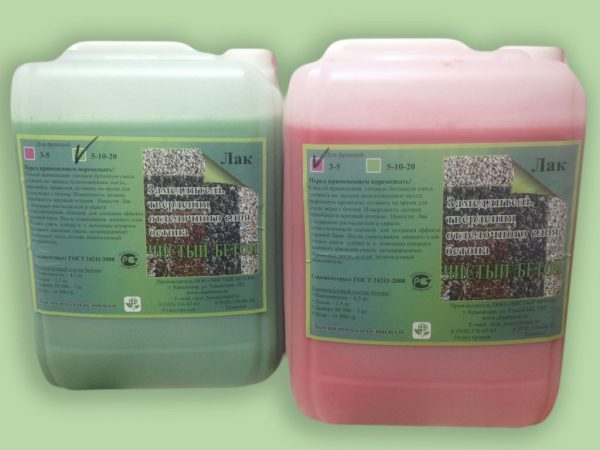
Also, for the manufacture of washed concrete with your own hands, you need to prepare some equipment:
- a container for mixing the solution;
- retarder spray device;
- spray gun for pump;
- water pump;
- concrete mixer (for small volumes it is possible to mix concrete manually);
- mold for pouring from plastic, metal;
- trowel for leveling the surface.
A more durable product can be manufactured using a vibrating table. This device will reduce the amount of voids in the mixture by expelling excess air and water.
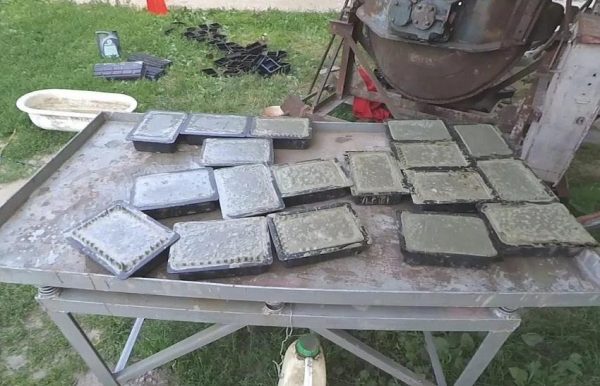
Production of washed concrete
At home, making the material is easy, you just have to adhere to the technology worked out over the years.
Preparation of working solution
First you need to measure a certain amount of all the components of the concrete mix: 1 part cement, 1-3 parts filler, 1.5 parts pure sand. After combining the dry components, water is added to the mass until a creamy consistency is obtained. For small elements, it is especially important to ensure that the solution does not come out too thick, and for large areas, on the contrary, it is better to prepare a denser mixture.
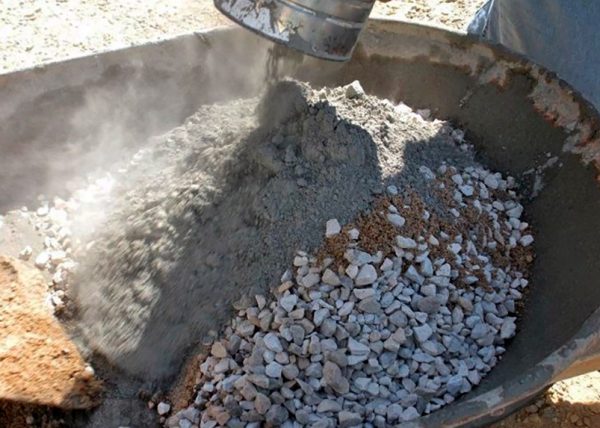
Laying concrete in formwork
After mixing the solution, the concrete curing retarder is sprayed onto the bottom of the mold. Then immediately pour the solution and smooth its surface with a trowel, if necessary. When a vibrating table is available, use it to compact the mass. To obtain interesting color effects, you can fill in different portions of concrete, previously painted with dry or liquid pigments.
Unfolding process
It is possible to get the finished product only with sufficient drying of concrete. Usually this period comes in 20 hours for small objects, in 40–48 hours for large products. Non-observance of concrete drying time leads to crumbling and spilling of the filler.
to contents ↑
Flushing the external concrete layer
The depth of absorption of the moderator gel is 0.2–1 cm. Rinse it and the top layer of the solution immediately after removing the product from the mold.For this purpose, a water pump or a home car wash is ideal. The procedure is carried out carefully so as not to damage the not fully matured composition. The jet is directed to the product using a spray gun under low or medium pressure, moving in one direction.
If concrete is not washed off well, a soft nylon brush can also be used. Before operation, wait 1–4 weeks (depending on the thickness of the layers) until the concrete is fully strengthened.
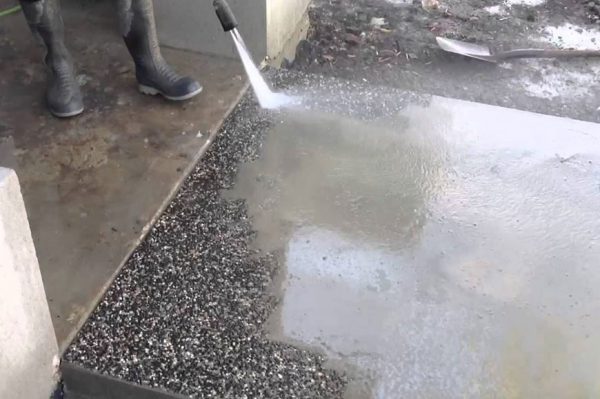
It is possible to make washed concrete yourself even without special knowledge and skills. With its help, it will be possible to decorate a personal plot or garden with real architectural compositions, and quickly and without unnecessary financial costs.




